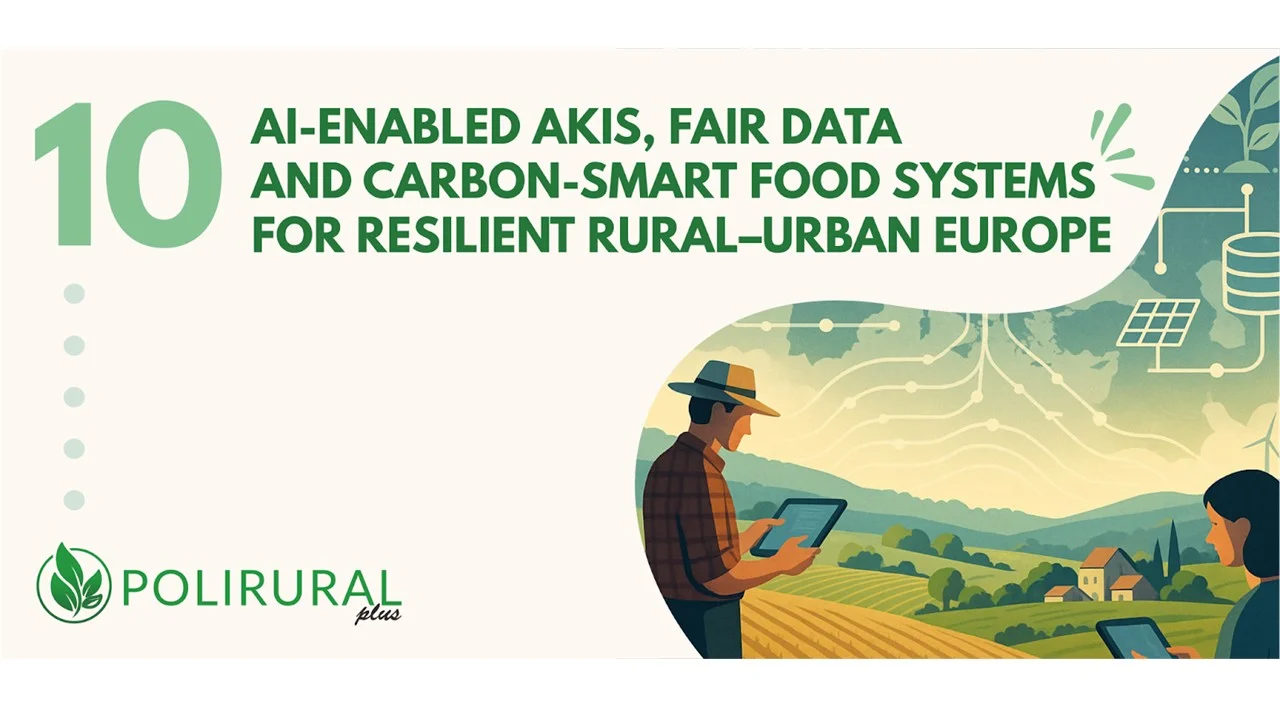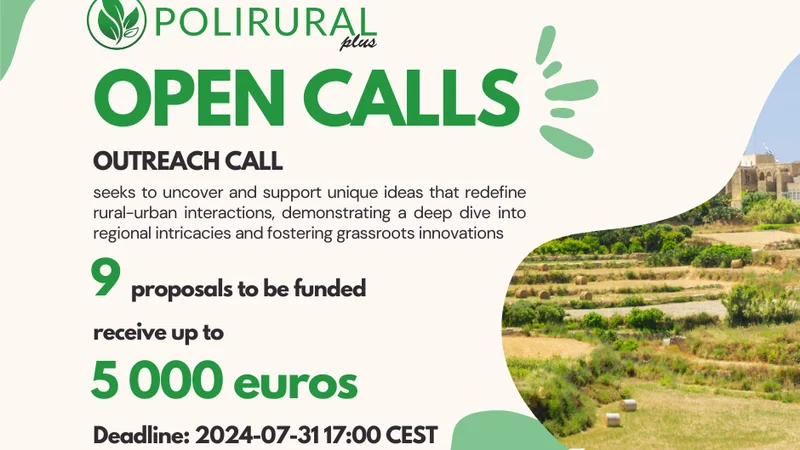As Europe continues its green and digital transitions, rural and peri-urban regions face a pressing question: how can they remain resilient, relevant, and connected in an increasingly data-driven world? The answer, as outlined in a new policy brief by the PoliRuralPlus project, lies in leveraging artificial intelligence (AI), FAIR (Findable, Accessible, Interoperable, Reusable) data principles, and localised food systems to build a smarter, more inclusive rural–urban future.
Nine pilots, one shared vision
Across nine diverse pilot regions, from Ireland’s County Monaghan to the Czech–Bavarian border, Central Greece, and Malta, PoliRuralPlus explored how AI-enhanced Agricultural Knowledge and Innovation Systems (AKIS 4.0) and FAIR-by-design rural data spaces can support goals set by the European Green Deal, Digital Decade, and the Long-Term Vision for Rural Areas.
What emerged was a common finding: digital tools are powerful enablers of transformation, supporting everything from climate-smart agriculture and eco-tourism to community-led food governance. However, their success hinges on more than just technology.
Hidden infrastructure: The human side of AI
One of the strongest messages from the field: AI is only as effective as the data and human systems behind it. Rural innovation hubs spent months manually curating multilingual, domain-specific datasets to make them readable by large language models (LLMs) like PoliRuralPlus’s own GPT Advisor. This “hidden infrastructure” of human effort remains chronically underfunded and under-recognised in EU digital policy, a critical blind spot if Europe is to deploy trustworthy, inclusive AI for the rural context.
Seven systemic challenges slowing progress
The brief identifies several key obstacles that must be addressed to scale innovation:
- Labour-intensive AI training processes
- Unequal digital literacy across rural populations
- Fragmented data governance frameworks
- Lack of AI-policy integration at the regional level
- Stakeholder fatigue from over-consultation
- Language barriers in tools and foresight content
- Narrow sectoral focus of current digital tools
These findings underscore the need for holistic strategies that combine digital infrastructure with governance innovation, human capacity-building, and local ownership.
10 recommendations for a smarter rural–urban future
To ensure AI works with and for rural communities, the PoliRuralPlus brief puts forward a set of strategic actions, including:
- Funding the human layer of AI – Including data curation in project budgets.
- Creating AI readiness scores – To benchmark regional capacity and guide investment.
- Providing FAIR data templates and open APIs – Tailored to agriculture, ecosystem services, tourism, and public admin.
- Investing in multilingual AI sandboxes – Especially for underrepresented languages.
- Training digital stewards – New professionals bridging the gap between tech developers and local users.
- Embedding co-creation platforms like MAATool – To integrate stakeholder input directly into AI systems.
- Aligning with AKIS and vocational education systems – Strengthening knowledge flows.
- Anchoring AI in local innovation infrastructures – Living labs, LEADER groups, demonstration sites.
- Supporting smart specialisation – By tailoring digital tools to local socio-economic realities.
- Using AI for real-time policy feedback – With interactive dashboards to enhance responsiveness.
Conclusion: AI as amplifier, not substitute
The rural digital transition is not just a technical challenge — it’s a governance mission. AI, if properly rooted in place-based development processes, can amplify local knowledge, support timely decision-making, and accelerate sustainability. But this can only happen if we recognise the vital roles played by communities, institutions, and intermediary actors in shaping how AI tools learn and serve.
Download the full policy brief



Existing Comments